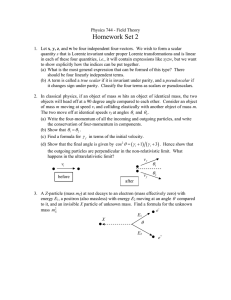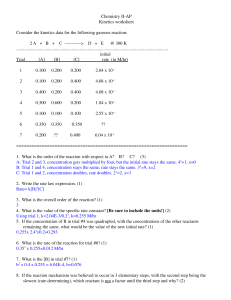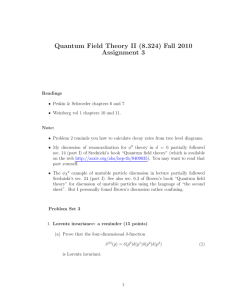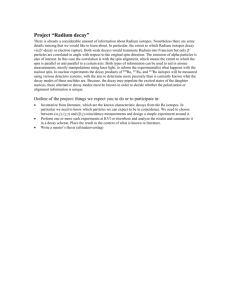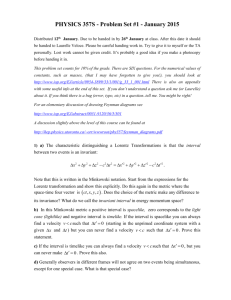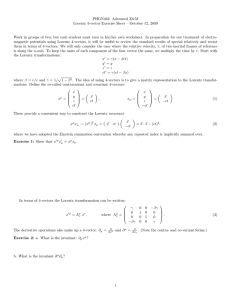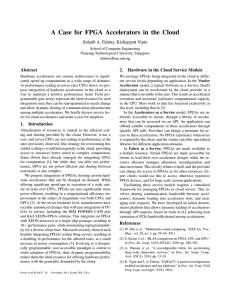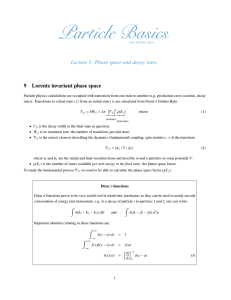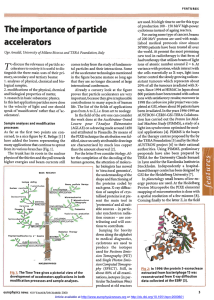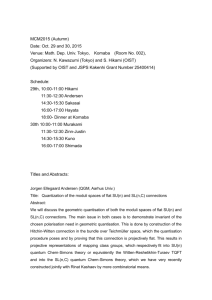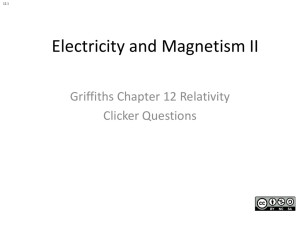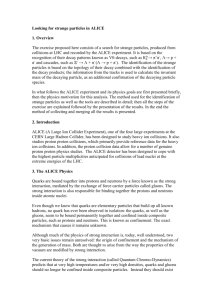PHYS 612
advertisement
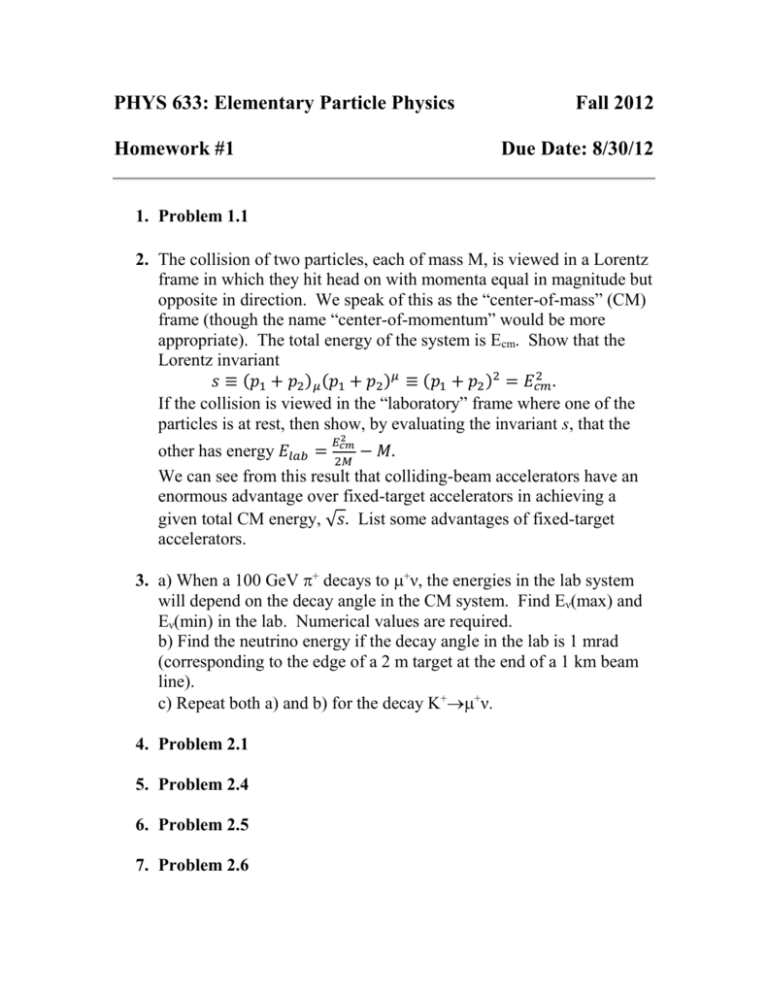
PHYS 633: Elementary Particle Physics Homework #1 Fall 2012 Due Date: 8/30/12 1. Problem 1.1 2. The collision of two particles, each of mass M, is viewed in a Lorentz frame in which they hit head on with momenta equal in magnitude but opposite in direction. We speak of this as the “center-of-mass” (CM) frame (though the name “center-of-momentum” would be more appropriate). The total energy of the system is Ecm. Show that the Lorentz invariant 2 𝑠 ≡ (𝑝1 + 𝑝2 )𝜇 (𝑝1 + 𝑝2 )𝜇 ≡ (𝑝1 + 𝑝2 )2 = 𝐸𝑐𝑚 . If the collision is viewed in the “laboratory” frame where one of the particles is at rest, then show, by evaluating the invariant s, that the 𝐸2 other has energy 𝐸𝑙𝑎𝑏 = 𝑐𝑚 − 𝑀. 2𝑀 We can see from this result that colliding-beam accelerators have an enormous advantage over fixed-target accelerators in achieving a given total CM energy, √𝑠. List some advantages of fixed-target accelerators. 3. a) When a 100 GeV + decays to +ν, the energies in the lab system will depend on the decay angle in the CM system. Find Eν(max) and Eν(min) in the lab. Numerical values are required. b) Find the neutrino energy if the decay angle in the lab is 1 mrad (corresponding to the edge of a 2 m target at the end of a 1 km beam line). c) Repeat both a) and b) for the decay K++ν. 4. Problem 2.1 5. Problem 2.4 6. Problem 2.5 7. Problem 2.6
